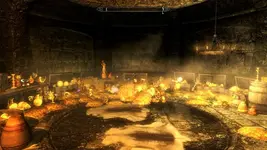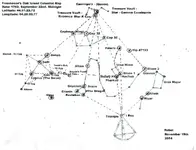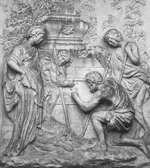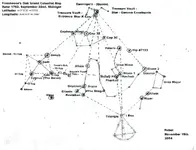What small piece is this?...That makes up such a large picture!
Like a Jigsaw Puzzle, where one small piece is needed to complete the larger picture, many pieces of the puzzle for the solution to the Mystery of Oak Island lie unnoticed.
While researching how the "Ball and Chain" was used by the British forces against the Americans in the Revolutionary War, this small piece showed why it was important for the Old World Freemasons to transfer their great wealth to Oak Island.
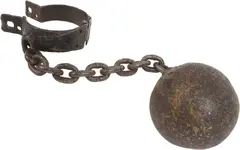
Men, like Master Freemason Benjamin Franklin encouraged support to rid the New World from the tyranny of these Kings and Queens who believed in the Divine Right of Kings, that a monarch is subject to no earthly authority, deriving the right to rule directly from the will of God. The king is thus not subject to the will of his people, the aristocracy, or any other estate of the realm.
King George III of Great Britain brought on The American Revolutionary War and declared the American forces traitors in 1775, which denied them prisoner of war status.
He believed the Colonial American soldiers and all who supported them to be traitors and not entitled to POW status and would treat them as unlawful combatants and subject them to execution on the battlefield if captured, as what happened at the Battle at Drake's farm during the Forage War.
It was not until the Continental Army's capture of a British army at the Battle of Saratoga in 1777, which resulted in thousands of British prisoners of war in the hands of the Americans that this effect further dissuaded British officials from hanging Colonial prisoners, despite the abandoned hopes of a settlement by this stage, as they feared reprisals on prisoners being held by the Americans. Neither policy, however, prevented the British from treating common American military members and sympathizers being held prisoner far more harshly than the standards of the day for POWs allowed.
The British during the Revolutionary War, made Long Island NY an important Penal Colony with the use of numerous old ships as their instrument of incarceration.
During the American War of Independence, more Colonist Americans died as prisoners of war on British prison ships through intentional neglect than died in every battle of the war combined
The war claimed 11,500 men and women due to overcrowding, contaminated water, starvation, and disease on prison ships anchored in the East River; the bodies of those who died were hastily buried along the shore.
"The heat was so intense that (the hot sun shining all day on deck) they were all naked, which also served well to get rid of vermin, but the sick were eaten up alive. Their sickly countenances, and ghastly looks were truly horrible; some swearing and blaspheming; others crying, praying, and wringing their hands; and stalking about like ghosts; others delirious, raving and storming,--all panting for breath; some dead, and corrupting. The air was so foul that at times a lamp could not be kept burning, by reason of which the bodies were not missed until they had been dead ten days."
During the American Revolutionary War, George Washington and his Continental Army put the laws of war into practice regarding prisoners of war unlike their opponents who did not. The Americans took a different view, believing that all captives should be taken prisoner. On September 14, 1775, Washington, commander of the Northern Expeditionary Force, while at camp in Cambridge, Massachusetts, wrote to Colonel Benedict Arnold that:
“Should any American soldier be so base and infamous as to injure any [prisoner]. . . I do most earnestly enjoin you to bring him to such severe and exemplary punishment as the enormity of the crime may require. Should it extend to death itself, it will not be disproportional to its guilt at such a time and in such a cause . . . for by such conduct they bring shame, disgrace and ruin to themselves and their country.”
In 1776, with The Declaration of Independence, a Cheer was heard around the World by these Freemasons with their
"Blessing" for America.
At the end of the War, preparations were made to transfer their great wealth from Oak Island, to help promote the independence of this New World and the Freemason’s organization.
Unfortunately
Like the opening of
"Pandora’s Box", when the Freemasons opened their Treasure Chests to launder the gold through the Banks of America and England a new
"Curse" was released.
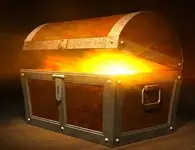
In the same year as America's cry for Independence, in May 1st, 1776, a new organization arose and began to prosper from these proceeds laundered through their Banks, one more powerful and sinister than that which was hoped to have been left behind!
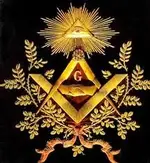



 I suspect that the oars were used more frequently than we suspect, as that amount of sail on even a 15 foot beam on the open ocean scares the hell out of me.
I suspect that the oars were used more frequently than we suspect, as that amount of sail on even a 15 foot beam on the open ocean scares the hell out of me.